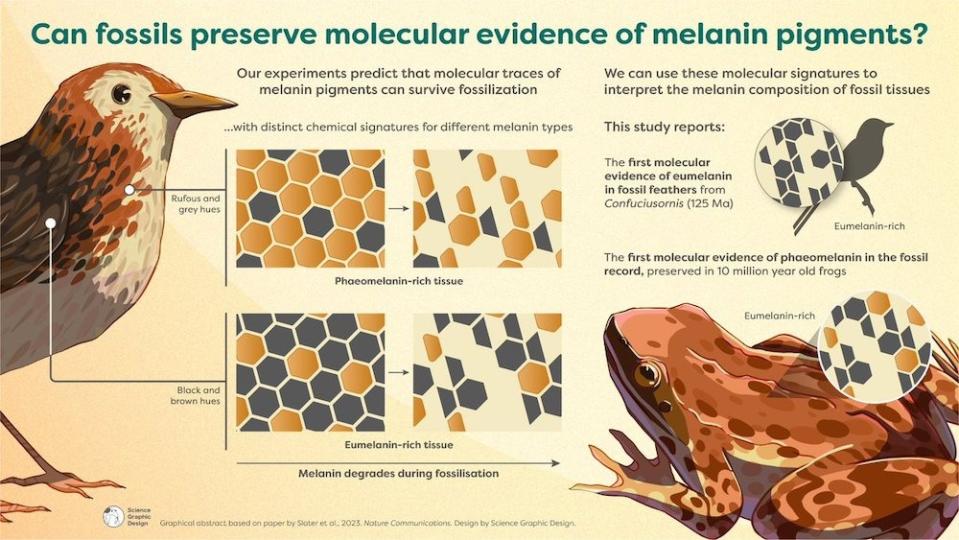Toxic pigment that causes red hair discovered in 10 million-year-old frog fossil

Paleontologists have discovered the earliest molecular evidence of the toxic pigment that causes red hair in the fossil record — in 10 million-year-old frog fossils.
The ancient amphibians had preserved fragments of pheomelanin (also spelled phaeomelanin), a yellowish-red pigment that produces ginger-colored hair in animals, including humans, according to a study published Oct. 6 in the journal Nature Communications.
"It's the exact same pigment that causes red hair in us," lead study author Tiffany Slater, a postdoctoral researcher of paleobiology at University College Cork in Ireland, told Live Science. "But that doesn't mean that the frogs were necessarily ginger colored when they were alive."
Pelophylax pueyoi is an extinct species of large frog that lived in what is now Spain during the Early Miocene (23 to 5.3 million years ago). Their fossilized remains are part of a museum collection and were loaned to the researchers, according to a statement.
Related: These female frogs fake their own deaths to get out of sex
To get a better understanding of how the pigments degrade during the fossilization process, the researchers examined liver tissues taken from the frog remains (the liver is known for containing high levels of pheomelanin) along with black, ginger and white bird feathers, which dovetailed with a previous study of theirs, according to the statement.
Their findings showed traces of pheomelanin contained within the liver tissues of the ancient frogs.
"Fossils are invariably altered by the ravages of heat and pressure during burial, but that doesn't mean that we lose all original biomolecular information," study co-author Maria McNamara, a professor of paleobiology at University College Cork, said in the statement. "Our fossilization experiments were the key to understanding the chemistry of the fossils and prove that traces of biomolecules can survive being cooked during the fossilization process."

Slater said their experiments are "pushing the boundaries" of what they thought was possible regarding the information a fossil can contain.
However, scientists are still learning how and why pheomelanin evolved in the first place, especially as it can be toxic to animals, Slater said. Pheomelanin is a type of melanin, a substance in the body that produces hair, eye and skin pigmentation. In humans, there are two types of melanin — eumelanin, which is responsible for dark colors, and pheomelanin, which produces blond and ginger hair colors and pale skin. While eumelanin helps protect from the sun's harmful UV rays, pheomelanin does not.
"It's toxic in the way that it interacts with sunlight, which can cause damage to certain cells," Slater said.
RELATED STORIES
—Nearly 170 genes determine hair, skin, eye color, CRISPR study reveals
—Chernobyl radiation set off black frog surge while green frogs 'croaked.' Evolution explains why.
—Black rain frog: The bizarre, grumpy-faced amphibian that's terrible at jumping and swimming
The scientists hope that further study can lead to a better understanding of the evolution of different pigments within the fossil record, providing an insight into the colors of ancient animals.
"This is the first molecular record of pheomelanin in the fossil record, and we need to start looking for pigments in more and older fossils," Slater said. "Then we can start [to rebuild] what it says about evolution, and the big question of why ginger pigments evolve despite them being toxic to animals."

